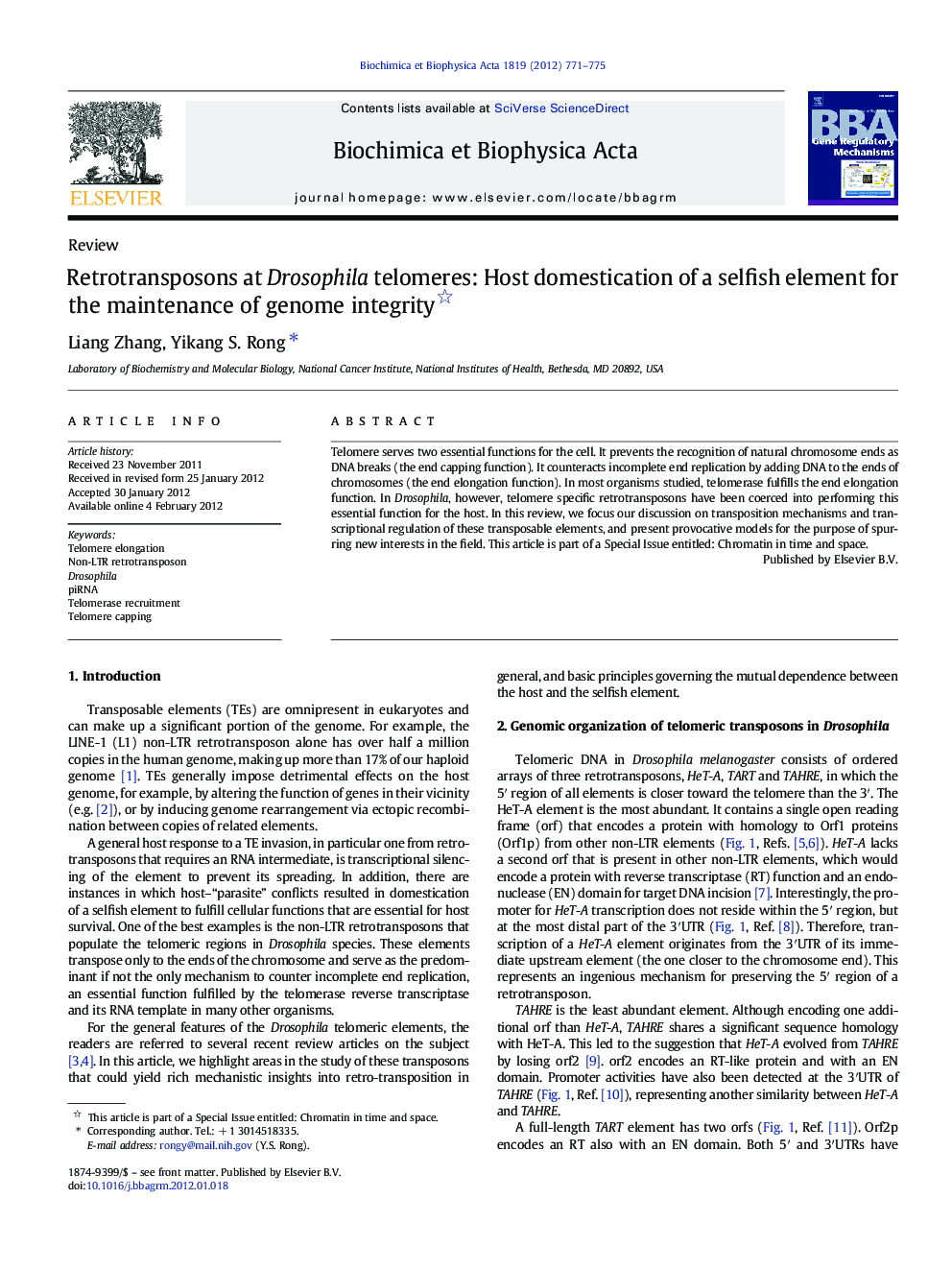| Article ID | Journal | Published Year | Pages | File Type |
|---|---|---|---|---|
| 1946586 | Biochimica et Biophysica Acta (BBA) - Gene Regulatory Mechanisms | 2012 | 5 Pages |
Telomere serves two essential functions for the cell. It prevents the recognition of natural chromosome ends as DNA breaks (the end capping function). It counteracts incomplete end replication by adding DNA to the ends of chromosomes (the end elongation function). In most organisms studied, telomerase fulfills the end elongation function. In Drosophila, however, telomere specific retrotransposons have been coerced into performing this essential function for the host. In this review, we focus our discussion on transposition mechanisms and transcriptional regulation of these transposable elements, and present provocative models for the purpose of spurring new interests in the field. This article is part of a Special Issue entitled: Chromatin in time and space.
► Most transposable elements negatively impact genome integrity of the host. ► A group of non-LTR retransposons has been coerced to perform essential telomere maintaining function in Drosophila and other insect. ► How the elements transpose exclusively to the ends of chromosomes is poorly understood. ► We raise provocative models to spur new interests in the field.
